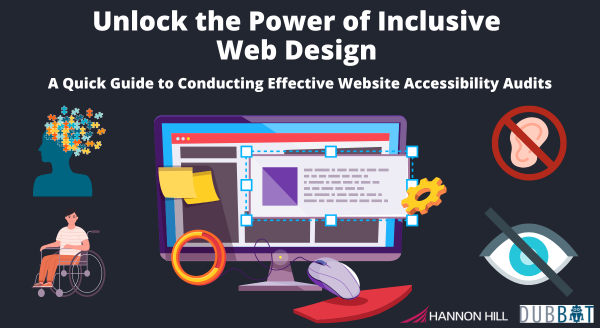
Conducting website audits is an essential step in improving website accessibility, but often auditing digital content for accessibility may seem like a daunting, if not impossible, task.
That's why putting a framework in place is important to make that effort more manageable.
In this guest post, Blaine Herman, Founder of DubBot, an accessibility checker software provider, shares a few steps to conduct your own website audits.
Even if you're starting small, it's still a start in the right direction.
Before you start, be realistic with your audit's scope, especially regarding the available resources and time, to avoid getting overwhelmed and giving up on the project too soon.
Consider whether you need to focus on a specific section or page or if you need to evaluate the entire website.
Start with the top-level pages of your website, such as your About or Admission pages. You can also take a sample of each content type you have, such as news articles or blog posts.
Many accessibility issues will be template-based, so taking a sample of each of your content types could get you a lot of bang for your auditing buck.
Good news for Cascade users: your CMS makes it painless to do by visiting the Subscribers tab for a Content-Type.
After defining the scope, select an accessibility standard to audit against.
The two primary standards are the Web Content Accessibility Guidelines (WCAG) and Section 508 of the Rehabilitation Act.
The most widely used standard for measuring website accessibility is the WCAG 2.1, AA level.
It's essential to test your content thoroughly. A complete accessibility audit requires two types of testing:
Automated and manual.
Suppose your website contains rich media such as videos or audio files. In that case, you must include well-constructed closed captioning or transcripts and well-written alternative descriptions, also known as ALT text, for images.
Utilizing a checklist such as DubBot's Beginner's Guide to Accessibility Testing and WCAG can assist in organizing testing criteria and tracking the results. This, in turn, can help prioritize remediation efforts.
Download a copy of the beginner's guide for your accessibility audit.
People are much more multi-dimensional than we often consider. Whenever possible, involve individuals with disabilities in testing your digital content. Actual user testing allows you to understand how users interact with your content.
For instance, a user who has partial vision may use assistive technology a bit differently than someone who has no vision. Of course, actual user testing can be pricey, so providing a place where users can register usability feedback within your website is critical.
Finally, document your goals, planned processes, progress, and, eventually, your achievements.
Doing this can help ensure that you are prepared for the inevitable question: "What are you doing to ensure your website is accessible?"
By using these steps and carrying out routine accessibility audits, you are helping to ensure that your website satisfies accessibility standards and the requirements of all your website visitors.
Conducting website audits for accessibility is critical to ensuring an inclusive digital experience for all users. By following these recommendations, you can create a manageable framework for auditing your website, starting with defining the scope, selecting a standard, and testing your content both automatically and manually.
Remember to involve individuals with disabilities in the testing process whenever possible and document your progress throughout the process.
While the task of auditing may seem challenging, taking these steps will help you create an accessible website that caters to the needs of all your visitors.
Embrace the challenge and make a positive impact on your users' experience by making your website accessible to everyone.
Last Updated: May 25, 2023 11:00 AM